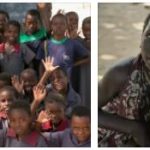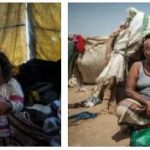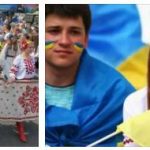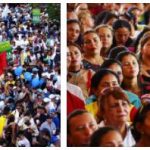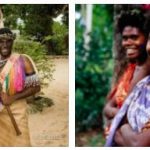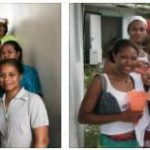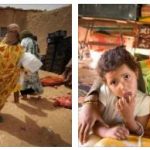Sierra Leone is located at the intersection of 8°30′ north latitude and 11°30′ west longitude. In the north and northeast it borders on Guinea, in the southeast – with gg, in the west it is washed by the waters of the Atlantic Ocean. The coast (402 km) is low, flat and sandy, indented in the north by estuaries, southeast of Sherbro Island – straight, with a lagoon stretching along it. The coastal strip of mangrove swamps passes in the west and south into a lowland plain and in the northeast – into the Leono-Liberian Upland with the peaks of Bintimani (1945 m), Sankan-Biriva (1858 m), Kundukondo (1631 m), Duru-kondo (1568 m). The bowels are rich in iron ore, diamonds, bauxite, gold, platinum, chromium ore, etc.
Red ferrallitic soils predominate.
The climate is tropical, hot and humid. The average annual precipitation on the coast reaches 4950 mm, in the interior – 2770 mm. The maximum precipitation falls in the “rainy season” (May – December) and the minimum – in the “dry season” (December – April). In December – February, a dry and sandy wind “harmattan” blows coming from the Sahara. The average temperature of the warmest month is +29°С, the coldest month is +24°С, within the country +31°С and +21°С, respectively.
The flora and fauna of Sierra Leone has been noticeably degraded as a result of human economic activity. Tropical forests now cover only 5% of the territory. Most of the territory is occupied by the savanna with its characteristic baobabs, shrubs, wild cereals, tall grasses, etc. The fauna of the country is characterized by various types of monkeys, antelopes, pygmy forest elephants, leopards, buffaloes, hippos, crocodiles, snakes. Numerous birds.
Sierra Leone has a developed river network. The largest rivers: Seva, Kaba, Roquel, Moa, Jong, Kolente.
Population of Sierra Leone
According to Countryaah, the population growth is 3.21%, the birth rate is 44.58%, the death rate is 18.83%, and the infant mortality rate is 144.38 people. per 1000 newborns. Life expectancy 45.96 years, incl. women 49.01, men 43.01 years. Age structure: 0-14 years old – 44.7%, 15-64 years old – 52.1%, 65 years and older – 3.2%. The entire population is somewhat dominated by men, who are 3% more than women. 35% of the population lives in cities (1998).
90% of the inhabitants are representatives of indigenous African peoples, incl. Temne – 30% and Mende – 30%, 10% – Creoles (descendants of freed slaves), as well as refugees from Liberia, Europeans, Lebanese, Indians, etc. Languages – English, Krio (Creole), spoken for 95% of the population, in Mende is common in the south, dark in the north.
Religion: ca. 60% are Muslims, 30% of the population are adherents of local religious beliefs, 10% are Christians.
History of Sierra Leone
The coast of present-day Sierra Leone was known to Portuguese navigators as early as the 19th century. In con. 18th century after the abolition of slavery in Great Britain, the British authorities founded the Freetown settlement here and began to populate it with former black slaves, incl. African soldiers demobilized from the British army. During the period of the struggle against the slave trade, Great Britain settled in Freetown the freed slaves recaptured from the slave traders. Freetown, which became a colony of the British crown, was also used as a springboard for British expansion into adjacent areas of West Africa. In con. 19th century these areas were declared a British protectorate.
Sierra Leone became an independent state within the Commonwealth on April 27, 1961. Ten years later, on April 19, 1971, the country was proclaimed a republic. Socio-political and economic experiments of S.P. Stevens and his successor as president, J.S. Momo to create a society of social justice did not bring the expected results. The socio-political and economic situation of the country has deteriorated sharply.
From the beginning 1990s The country entered a period of internal political internecine conflict. On the border with neighboring Liberia, government troops intensified their military operations against the guerrillas of the Revolutionary United Front (ROF) and the Liberian rebels who supported them, led by C. Taylor. A military coup on April 29, 1992, overthrew President Momo, suspended the 1991 Constitution, and brought the National Provisional Ruling Council (NVPS) to power. In January 1996 there was a new military coup, but in February general presidential and parliamentary elections were held, which brought to power the Sierra Leone People’s Party and its leader, A.T. Kabba. In May 1997, the military, opposed to the civilian government, staged a coup. However, as a result of sanctions by member countries and the actions of the ECOWAS military contingent (ECOMOG), the government of the Revolutionary Council of the Armed Forces was overthrown, and in March 1998 President Kabbah returned to the country. In 2002, he was again elected president for a new five-year term.
Despite the efforts made by the world community, incl. the repeated organization of government negotiations with the rebels, the signing of ceasefire agreements, the beginning of the withdrawal of ECO-MOG troops, the deployment of a military contingent to the country as part of the UN Mission in Sierra Leone, etc., the internecine struggle in the country continues.

